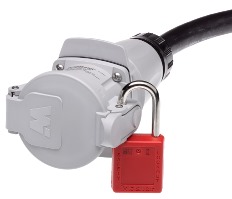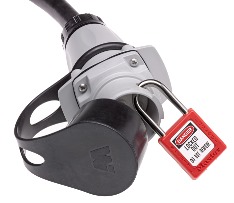
Utilizing Proper Technologies Key to Ensuring Electrical Safety
Adequate training, protection from exposure, and disciplined use of ground fault circuit interrupters are integral to keeping workers safe.
- By Tony Quebbemann
- Dec 01, 2017
Thanks to major safety improvements, the number of fatal electrical injuries in the workplace has steadily decreased during the past 20 years, from 334 in 1992 to 139 in 2013. However, the trend with non-fatal electrical injuries has been less consistent, ranging between 1,700 and 2,950 injuries annually, according to the U.S. Bureau of Labor Statistics.1
The leading electrical injury event for non-fatal injuries between 2003 and 2010 was "contact with electric current of machine, tool, appliance, or light fixture," which accounted for 37 percent of injuries. The second-leading cause was "contact with wiring, transformers, or other electrical components," with 35 percent of injuries.
Many workers who experience an electrical injury have insufficient training for working on or around energized electrical equipment. Time pressures and supervisor demands may contribute to workers overriding rules to complete assigned tasks more quickly. Taking shortcuts can pose potentially lethal risks for those working around industrial power equipment.
The Importance of Proper Training
Training programs that target all workers exposed to electrical safety hazards can help greatly in the recognition and avoidance of electrical hazards. These programs always must focus on why it is never acceptable to take shortcuts and "work around" safety codes to complete a job more quickly.
Workers and managers must understand and follow electrical safety codes, such as the National Fire Protection Association's National Electrical Code (NEC). There have been 15 revisions of the NEC since 1975.2 This code specifies the minimum requirements for safe electrical installations in a single, standardized source, and revisions are based on an open process that occurs every three years.
While developing new products and improving others to keep up with the new safety rules and regulations, trusted suppliers that adhere to industry standards also may offer safety training courses to help distributors and end users understand code changes and how they can affect job site and plant safety.
Making the Disconnection
The Occupational Safety and Health Administration (OSHA) requires employees who face a risk of electric shock to be trained to recognize and protect themselves from specific hazards. Of the top 10 most frequently cited OSHA standards violated in 2016, three were directly related to electrical safety:
- Control of hazardous energy (lockout/tagout)
- Electrical, wiring methods, components and equipment, general industry
- Electrical systems design, general requirements, general industry3
 Proper lockout/tagout (LOTO) procedures ensure that machines are powered off and can’t be turned on while someone is working on them. OSHA investigations of electrical injury incidents and prior research indicate that work inappropriately performed on energized equipment is associated with a substantial share of electrical injuries.
Proper lockout/tagout (LOTO) procedures ensure that machines are powered off and can’t be turned on while someone is working on them. OSHA investigations of electrical injury incidents and prior research indicate that work inappropriately performed on energized equipment is associated with a substantial share of electrical injuries.
An important part of the LOTO procedure is proving that there is no power in the circuit supplying the machine, which can be time consuming. This process can include donning cumbersome personal protective equipment and opening the switch to manually probe wires using a volt meter to confirm zero power. Replacing a simple motor may take an hour or longer; however, taking shortcuts can cause serious ramifications.
Leading vendors have responded by developing innovative components that help protect workers while maximizing production uptime. OSHA estimates show that compliance with the LOTO standard prevents more than 100 fatalities and tens of thousands of injuries annually.
 The latest development is a LOTO solution that protects against exposure to electrical energy and can be connected or disconnected quickly and safely. Unlike standard connectors, devices rated to UL 2682 can operate as switches and be used to safely disconnect equipment while energized. Spring-loaded silver-nickel contacts provide switching capabilities similar to a switch or contactor and also offer a low-resistance connection.
The latest development is a LOTO solution that protects against exposure to electrical energy and can be connected or disconnected quickly and safely. Unlike standard connectors, devices rated to UL 2682 can operate as switches and be used to safely disconnect equipment while energized. Spring-loaded silver-nickel contacts provide switching capabilities similar to a switch or contactor and also offer a low-resistance connection.
A two-step connector operation places the plug in a rest position after disconnection, requiring a rotating motion to remove the plug while simultaneously closing the receptacle shutter. The positive and quick LOTO system can safely disconnect equipment—using the separation of the plug from the receptacle as proof-positive power is removed.
Maintaining a Balanced Current
Companies also can keep workers safe through the disciplined use of ground fault circuit interrupters (GFCIs) in wet and hazardous settings. Since being required for use in the late 1970s on 120V, single-phase, 15 and 20A temporary receptacle outlets used on construction sites, GFCIs in the construction industry have saved between 650 and 1,100 lives, according to OSHA.4 Since their introduction, the requirements for GFCIs have continually expanded to include additional locations.
A GFCI disconnects a circuit when it detects that the electrical current is not balanced between the energized conductor and the return neutral conductor. An imbalance can indicate current leakage through the body of a grounded person who accidentally contacts the energized part of the circuit. GFCI devices disconnect quickly enough to prevent injury.
While skin offers a good deal of resistance when dry, if wet for any reason (rain, sweat, standing in a puddle of water), the skin's electrical resistance (measured in ohms) drops dramatically and the amount of electrical current that flows through the body increases.5
All electrical components exposed to moisture, weather, or harsh environments, whether indoors or outdoors, require a watertight connection to eliminate or reduce the risk of electrical shocks, short circuits, and electrical fires. NEMA and IP designations apply to prevent moisture and water accumulation, in addition to outlining protective standards for locations exposed to gases, fumes, vapors, liquids, or other agents that can have a deteriorating effect on power conductors and equipment.
GFCIs, which should be used in any indoor or outdoor area where water may come into contact with electrical products, can be placed on individual electrical power cords (in-line GFCI) or deployed systemically to protect an entire system from ground faults, nuisance tripping, and other hazards. It's important to select code-compliant GFCI components from a reliable source that can ensure all parts are compatible.
Fully integrated watertight wiring systems are now offered to deliver best-in-class GFCI protection in the toughest, wettest, most abrasive work sites and industrial plants. Proper utilization of the right technologies designed for the job can help prevent the causes of many electrical-related accidents, injuries, and deaths.
References
1. http://www.nfpa.org/News-and-Research/Fire-statistics-and-reports/Research-reports/Electrical-safety/Occupational-Injuries-from-Electrical-Shock-and-Arc-Flash-Events
2. http://www.esfi.org/resource/the-2017-national-electrical-code-594
3. https://blog.dol.gov/2016/10/18/top-10-osha-citations-of-2016-a-starting-point-for-workplace-safety/
4. https://www.osha.gov/dte/grant_materials/fy07/sh-16615-07/gfci_wiring_handout.pdf
5. https://www.osha.gov/dte/grant_materials/fy07/sh-16586-07/4_electrical_safety_participant_guide.pdf
This article originally appeared in the December 2017 issue of Occupational Health & Safety.